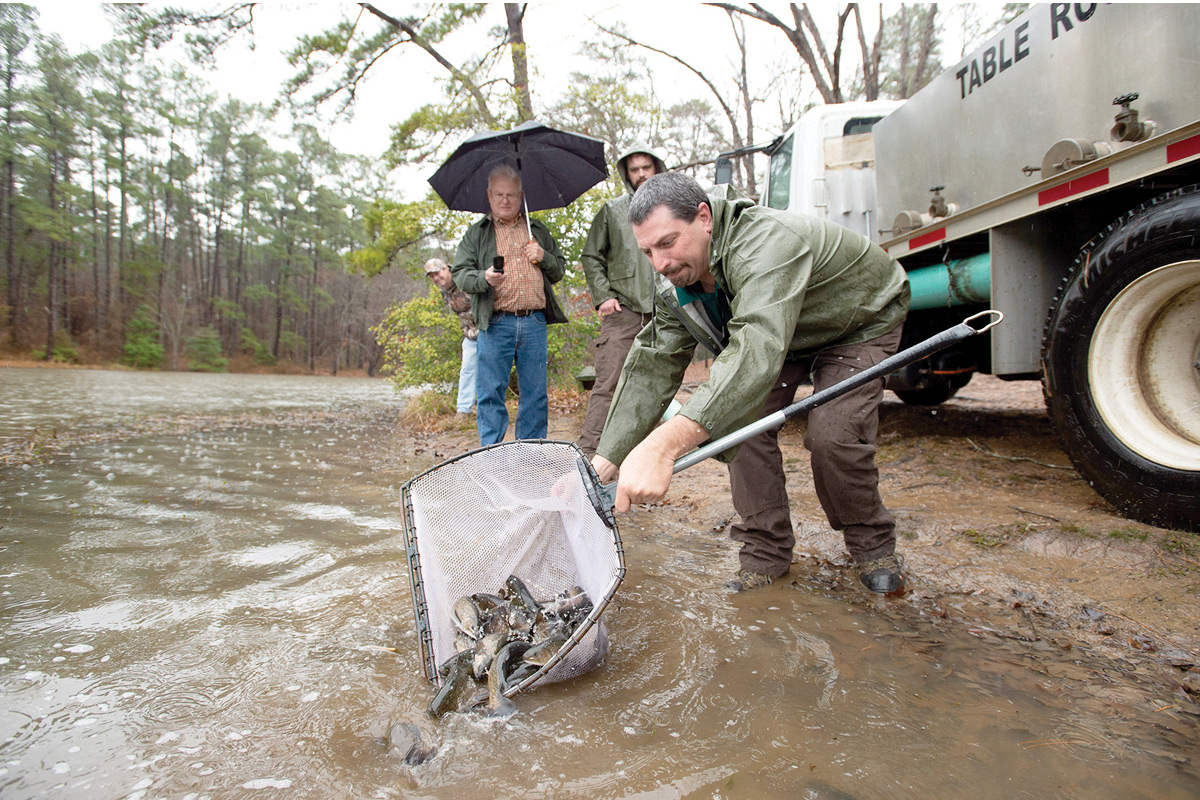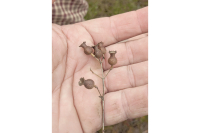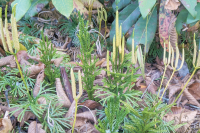Trout stocking reduced as hatchery gets rebuild
 An N.C. Wildlife Resources Commission official releases trout into a river.
NCWRC
An N.C. Wildlife Resources Commission official releases trout into a river.
NCWRC
As the Bobby N. Setzer Fish Hatchery in Transylvania County readies to shut down for a lengthy renovation, local anglers, guides and outfitters have amped up their effort to raise awareness around what may be a massive blow to their business.
While the 2024 trout stocking of delayed harvest waters, set to begin in the coming days, will be normal, the next two to three seasons will not.
The regional trout fishing economy did see a boom over the last several years, especially in the early 2020s on the tail end of pandemic shutdowns when Americans sought out both more domestic vacation destinations and those that offer outdoor recreation opportunities. As The Smoky Mountain News reported in December 2023, a report released by the N.C. Wildlife Commission put the economic impact in the state’s western 26 counties at $1.38 billion, a 360% percent surge since the 2015 report. In that story, outfitters noted that they were pleasantly surprised by the boom in the industry on the heels of COVID shutdowns. Now, they’re nervous about anglers spending their money elsewhere.
The outcry has become louder in recent months, especially in Maggie Valley, where an outfitter and some guides have been sounding the alarm. Shannon Young, co-owner of the 18-month-old Maggie Valley Fly Shop, said business has been pretty solid up to this point. While he understands the renovations to the hatchery are necessary, he worries about seeing a downturn once out-of-town anglers learn of the reduction in stocking. As of now, that reduction is estimated to be about 65% total across the western region.
“That’s the start of the problem, and then when the people quit coming here, they’ll go elsewhere to fish in other states or they’ll go out west or they’ll just stay home,” Young said.
This, Young predicted, will have a ripple effect that may hurt all businesses, from hotels to restaurants to other tourist attractions.
Related Items
“All small businesses in Maggie Valley depend on tourism, so we can’t lose any facet of those dollars,” he said, adding that over two to three years, losses can mount and permanently cripple businesses.
The Setzer hatchery was constructed in the 1950s, and with that age comes a whole host of issues. While the flooding that devastated the region following a catastrophic cloud burst courtesy of Tropical Storm Fred in 2021 decimated the fish stock and damaged parts of the facility, officials interviewed by The Smoky Mountain News said the ball was already rolling on the necessary renovations prior to that.
Doug Besler, the Mountain Region fishery supervisor for the N.C. Wildlife Resources Commission, said that between the Setzer hatchery and the Armstrong hatchery in McDowell County, about 1 million trout are stocked across about 180 locations in North Carolina waters annually, a number that has steadily grown over the 28 years he’s worked for the fisheries branch of the agency.
“It’s a big program and has incrementally grown over past 75 years,” Besler said. “But the [the Setzer Hatchery] is functionally obsolete now.”
David Deaton has been with the state’s hatchery program for 24 years and now serves as the fish production supervisor. He spoke to some of the specific upgrades on the horizon. While many of the buildings — particularly the hatchery building — need to be modernized and made larger, perhaps the most crucial issues are the raceways and associated pipes.
“The infrastructure itself is pretty outdated and crumbling,” he said. “We could literally have a pipe collapse tomorrow and lose everything.”
“We will be tearing out the existing raceways and rebuilding them,” he added.
The architectural plans for the renovation are now complete, and in months the project will go out to bid. Construction is slated to begin sometime around late fall or early winter and is expected to take 18-24 months. The aim is to increase reliability and capacity for fish production while also improving water quality downstream in the Davidson River.
Deaton said that right now, the agency is finishing up the construction document review and permitting processes.
“We are looking at putting the project out for bid late summer or early fall and looking for construction to begin either late fall or early winter of this year,” he said, adding that while it’s estimated that the project may come in at around $40 million, they won’t know for sure until the bids start coming back.
Of the estimated $40 million for the project, NCWRC is paying half and the General Assembly ponied up for the other $20 million in last year’s budget. Prior to that budget process, several legislators went out and toured the facility, including Rep. Mike Clampitt (R-Swain), who serves on the House Wildlife Resources Committee.
“We spent a whole day going through there,” Clampitt said. “The flood from Floyd destroyed some buildings, and it’s got a severe leaching problem out of the holding area where the fingerlings are at.”
Clampitt added that when it came to the budget process, there wasn’t any serious pushback and that legislators all understood the need for the repairs.
There are some ways to potentially mitigate the shortfall in trout stocking that will be seen over the next two to three seasons. First, officials plan to ramp up stocking out of the Armstrong hatchery as much as a possible, although that can create some logistical challenges in the far-flung reaches of the region.
“Those fish take longer distances to get to Cherokee County than from the Setzer hatchery,” Besler said, noting that they don’t want to compromise the health over the long distances. Basically, creative solutions will need to be explored.
Either way, the strategy for stocking is relatively simple — instead of dumping the fish all at once or simply cutting certain streams off, they will scale back the number of stocking events by the same degree in each waterway. Besler said he believes that’s the only way it can be fair.
“Jonathan Creek is extremely important to Maggie Valley, just like the Catawba River is important in Marion and the Wautauga is important to Boone,” he said. “We decided early on in this we didn’t want to pick winners and losers.”
While there is some concern that poachers — who are given advance notice of stocking just like everyone else — may take an outsized portion of the fish, Besler said that likely won’t be the case and added that it’s important to let folks know when the streams will be stocked since many out-of-towners plan trips well ahead of time based on when they’ll find the best fishing.
“People historically have always known when we’re stocking,” he said, adding that local anglers may also opt to fish wild trout streams they perhaps hadn’t considered before.
Many have brought up the idea of working with private hatcheries to buy large numbers of fish to bolster the stocking. While Deaton confirmed they are talking to a few businesses about that possibility, he cautioned people against thinking that’s a failsafe solution.
“We’ve looked into that, but one thing people don’t realize is it’s a lot of fish we’d have to purchase,” Deaton said. “These private growers, they have standing customers, and they’re limited on space as well, so they don’t have a lot of space to grow fish for us. But we are working currently with three producers now looking at options.”
In the meantime, Deaton and Besler said that while they know this process will create some hardship, they’re asking people to be patient and to understand these renovations are a necessity at this point.
“We’re doing this for the long haul in that our goal is a stable, prospering trout program for decades, and the best way to do that is good infrastructure,” Besler said. “We are always available to meet with communities or individuals with concerns.”
For more information, including timely updates, visit ncwildlife.org/setzer.













